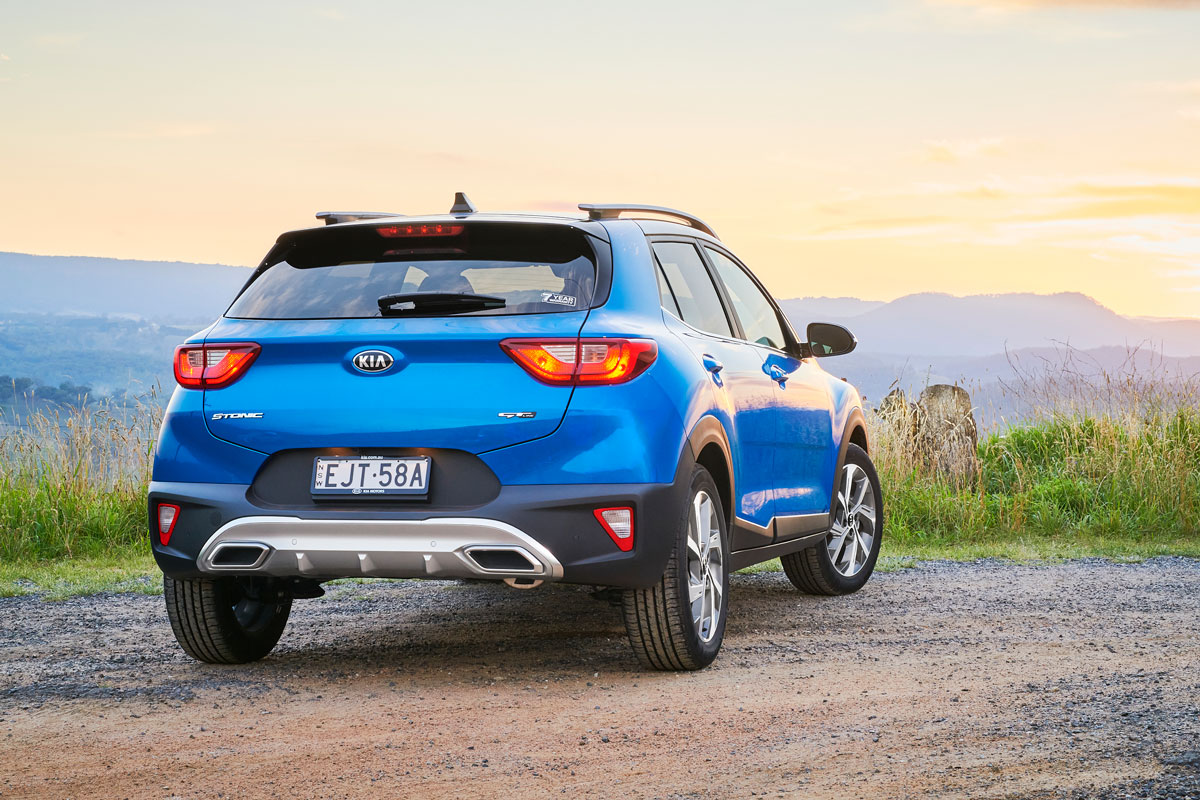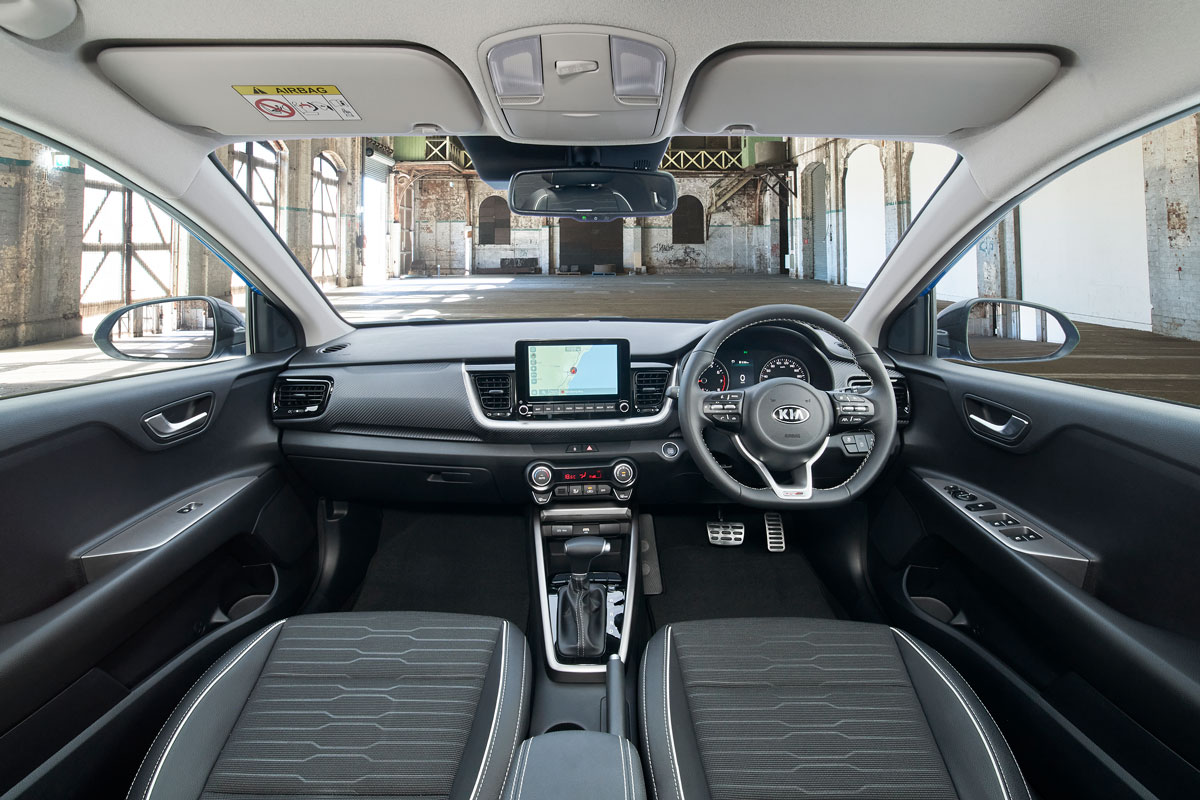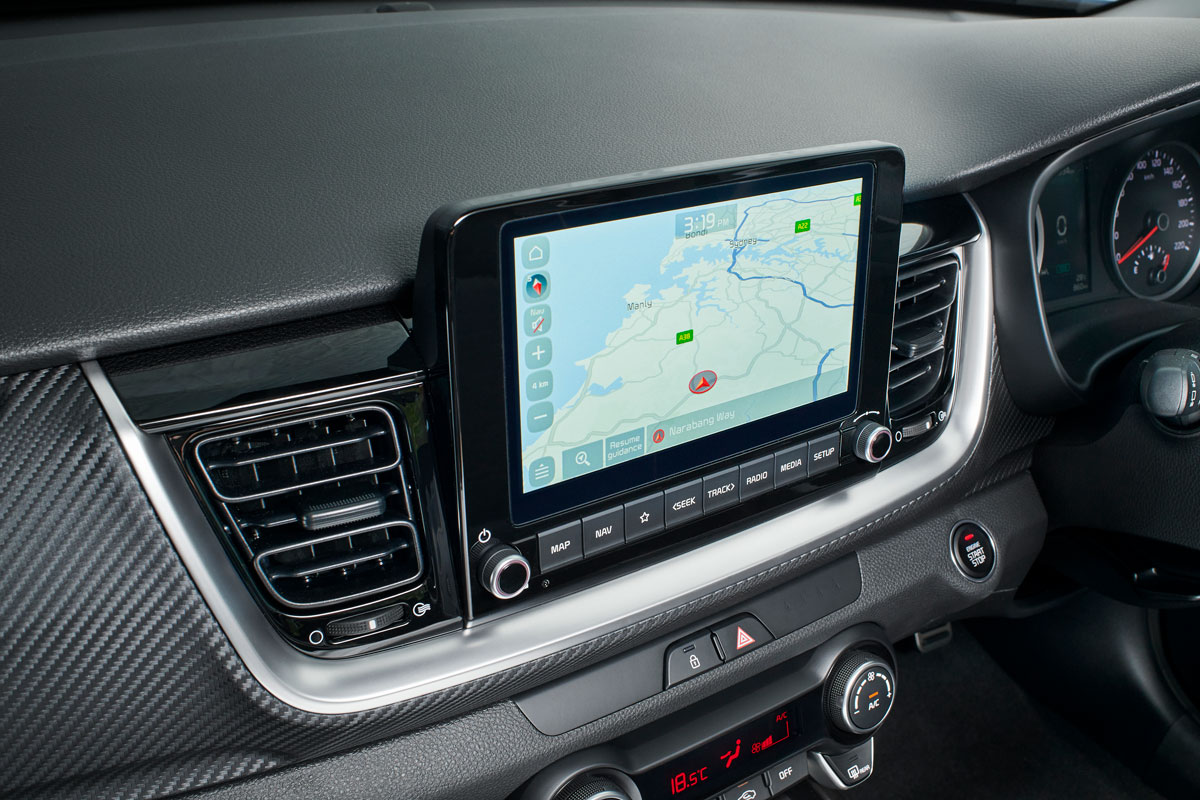
Although new to Australia, the Kia Stonic launched in Europe in late 2017 and what’s making its way to our shores is a mid-cycle facelifted version.
The 2021 Kia Stonic shares a platform with the Kia Rio hatch; differentiating it are a taller ride height, some unique sheet metal (including more muscular wheel arches), and a stronger frame. The 1.4-litre variants share the Kia Rio’s five-star ANCAP safety rating from 2017, while the GT-Line is untested.
While a number of other brands are pushing up the entry point for compact SUVs, the 2021 Kia Stonic range kicks off at $21,490 with the budget-conscious ‘S’ manual model. Steel wheels and no keyless entry are the main concessions to affordability.
An extra $3000 for the mid-spec Stonic Sport brings 17-inch alloy wheels, electric folding mirrors, a premium steering wheel and gear shifter, smart key and push-button ignition, and satellite navigation. A 1.4-litre four-cylinder (74kW/133Nm) engine powers both the S and Sport, matched to a six-speed manual, while a six-speed auto transmission costs $1500 more.
The flagship GT-Line, priced from $29,990, is our test model and gets Kia’s new 1.0-litre three-cylinder turbo engine, a seven-speed dual-clutch transmission and outputs of 74kW/172Nm. It also has a sportier suspension tune, unique alloys, LED headlights, leather-accented seats, climate control, and the option of a two-tone colour treatment or sunroof.
Primarily targeting younger buyers, the Stonic offers plenty of up-to-the-minute technology. It can connect two different smartphones simultaneously, there’s a USB port in the front and rear, and the GT-Line gets an automatic defogging system that works on a similar principle to automatic wipers.
Unusually for a Kia, though, the Stonic does have some bothersome operational quirks. The gear shifter impedes access to drive mode and parking sensor buttons, which wouldn’t be such a big deal except the Stonic defaults back to eco mode every time you switch it off. It also insists on reactivating its over-eager lane-keeping assistance, which can only be disengaged by holding down a button on the steering wheel for a few seconds.



The 1.4-litre engine in the S and Sport models is getting long in the tooth, so the GT-Line is preferable if budget allows. The turbo 1.0-litre is much quieter and more refined than Kia’s historically raucous small-capacity engines, and on paper it doesn’t give up much to the impressive Ford Puma we tested last issue. While delivering smooth driving overall, it is prone to a touch of turbo lag and wants for acceleration in some situations the Puma doesn’t.
Ride and handling are predictably pleasing. The GT-Line has a firmer suspension tune for improved cornering, yet you wouldn’t know it from the way it soaks up even the nastiest bumps. And its claimed fuel economy of 5.4L/100km seems achievable. We returned 5.6L/100km on our real-world test, but don’t expect such low numbers if you have a few occupants or you’re tackling hills.
It’s unfortunate the Stonic arrives after competitors (Ford and Mazda in particular) have put upward pressure on the segment. Had it launched here three years ago, it would have been close to the best light SUV on the market. Nevertheless, unlike Ford and Mazda, Kia hasn’t forgotten its budget-conscious buyers, and the Stonic should definitely be in your test-drive mix.
Pros: Turbo engine in GT-Line; good looks; latest tech inclusions
Cons: Aging engine in S and Sport models